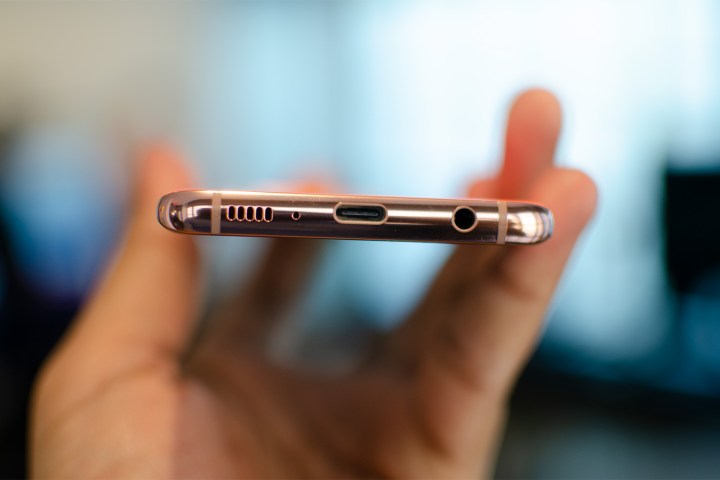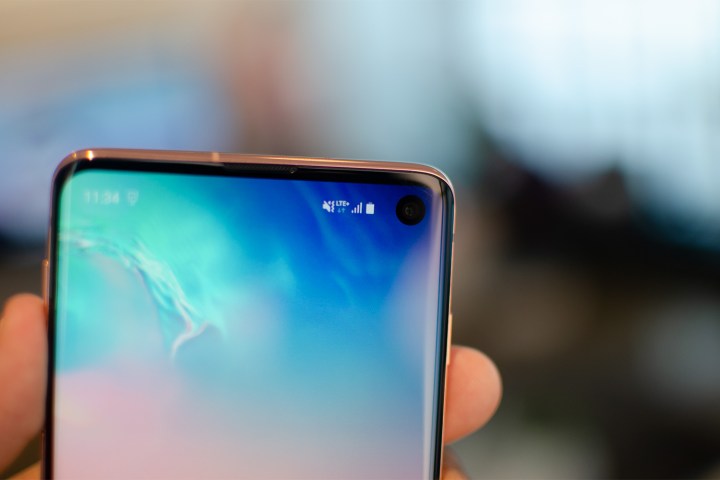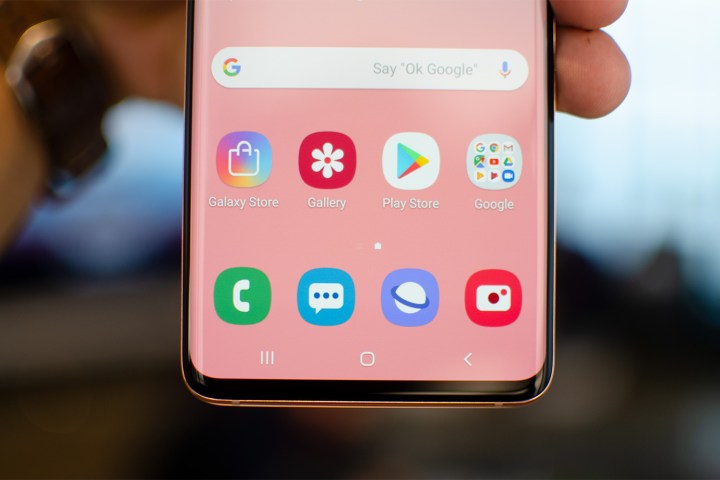As Samsung’s Galaxy S range turns 10 years old, the company decided to release something extra special. This is the biggest shake-up for the series we’ve seen in years. The new S10 lineup is stunningly stylish and packed with cutting-edge tech. If you’re tempted, we don’t blame you but last year’s Samsung flagship is also still a good phone.
Whether you’re wondering if you can save some cash by buying the older model, or you’re trying to decide if it’s worth upgrading, this comparison should help. How does the new Samsung Galaxy S10 measure up against last year’s S9? Let’s find out.
Specs
| Samsung Galaxy S10 |
Samsung Galaxy S9 | |
| Size | 149.9 × 70.4 × 7.8 mm (5.90 × 2.77 × 0.30 inches) | 147.6 x 68.7 x 8.4 mm (5.81 x 2.70 x 0.33 inches) |
| Weight | 184 grams (5.53 ounces) | 163 grams (5.75 ounces) |
| Screen size | 6.1-inch Dynamic AMOLED | 5.8-inch Super AMOLED display |
| Screen resolution | 3,040 × 1,440 pixels (551 pixels per inch) | 2,960 x 1,440 pixels (570 pixels per inch) |
| Operating system | Android 9.0 Pie | Android 9.0 Pie |
| Storage space | 64GB, 128GB, 256GB | |
| MicroSD card slot | Yes | Yes, up to 512GB |
| Tap-to-pay services | Google Pay, Samsung Pay | Google Pay, Samsung Pay |
| Processor | Qualcomm Snapdragon 855 | Qualcomm Snapdragon 845 |
| RAM | 8GB | 4GB |
| Camera | Triple lens ultra wide-angle 16-megapixel, standard 12MP with OIS and variable aperture, and telephoto 12MP with OIS rear, 10MP front | 12MP (with OIS) rear, variable aperture, 8MP front |
| Video | 2,160p at 60 fps, 1,080p at 240 fps, 720p at 960 fps | 2,160p at 60 frames per second, 1,080p at 240 fps, 720p at 960 fps |
| Bluetooth version | Bluetooth 5.0 | Bluetooth 5.0 |
| Ports | USB-C port, 3.5mm audio jack | USB-C port, 3.5mm audio jack |
| Fingerprint sensor | Yes, in display | Yes, on back |
| Water resistance | IP68 | IP68 |
| Battery | 3,400mAh
QuickCharge 2.0 Qi wireless charging |
3,000mAh
QuickCharge 2.0 Qi wireless charging |
| App marketplace | Google Play Store | Google Play Store |
| Network support | AT&T, Verizon, T-Mobile, Sprint | T-Mobile, AT&T, Verizon, Sprint |
| Colors | Prism Black, Prism White, Prism Blue, Flamingo Pink | Midnight Black, Coral Blue, Lilac Purple |
| Price | $900 | $720 |
| Buy from | Samsung | Samsung, Amazon |
| Review score | 4 out of 5 stars | 4 out of 5 stars |
Performance, battery life, and charging

Almost every Android flagship last year had a Qualcomm Snapdragon 845 processor inside, the Galaxy S9 included. This year it will be the Snapdragon 855 and the Galaxy S10 is one of the first phones we’re seeing with the new chip. It offers improved performance and range of new tricks including improved artificial intelligence features, better connectivity, and camera enhancements. Samsung has also seen fit to double the RAM in its flagship — the S10 has a whopping 8GB.
The improvements don’t stop there, because the S10 also has a bigger battery, with an extra 400mAh over its predecessor. Unfortunately, the wired charging speed hasn’t jumped from Qualcomm’s Quick Charge 2.0 standard, but wireless charging should be faster with the right kit and the S10 can wirelessly charge other Qi-certified devices through a new feature called Wireless PowerShare, which could prove handy in a pinch.
Winner: Samsung Galaxy S10
Design and durability
The S10 represents the biggest design overhaul we’ve seen for the Galaxy S series in the last few years. We’re still looking at a curved glass sandwich with a metal frame, but the camera module is now horizontal with two extra lenses and there is no fingerprint sensor on the back. Around the front, the S10 is almost entirely screen with the slimmest of bezels and a hole punch camera at the top right. The S9 is still a very good-looking phone, but the S10 is clearly newer and has that futuristic feel.
In terms of durability, there is nothing to divide these phones. They will both need cases and they both score an IP68 rating for water resistance, which means they can be submerged in up to 5 feet of water for up to 30 minutes without damage.
Winner: Samsung Galaxy S10
Display

Samsung managed to squeeze a slightly bigger 6.1-inch screen into the S10, compared to the 5.8-inch display in the S9. It’s not just bigger, it’s also HDR10+ certified, super bright, boasts accurate colors, and emits less blue light. Dynamic AMOLED improves on Samsung’s already awesome Super AMOLED and the hole-punch camera, or Infinity O as Samsung calls it, is subtle enough that it shouldn’t detract from your enjoyment. The display in the S9 is still one of the best available, but the S10 display looks to be slightly better.
Winner: Samsung Galaxy S10
Camera

This category may be where we see the biggest improvement. The S10 still has the standard 12-megapixel lens with a variable aperture that you’ll find in the S9, but it’s now flanked by an ultra wide 16-megapixel lens with a 123-degree field of view and a 12-megapixel telephoto lens capable of 2x optical zoom. The jump from a single lens to a triple-lens camera suite means the S10 camera is going to be capable of everything that the S9 camera could deliver and much, much more. If you want to zoom in on a distant subject or capture more of a scene, then the telephoto and wide-angle lenses will help you do it. The S10 boasts a seriously versatile camera suite.
There are changes around the front, too, with the 8-megapixel selfie camera in the S9 being upgraded to a 10-megapixel shooter capable of capturing 4K video in the S10.
Winner: Samsung Galaxy S10
Software and updates

The Samsung Galaxy S10 ships with Android 9.0 Pie and Samsung’s One UI over the top. The Galaxy S9 was recently updated to Android 9.0 Pie, so there shouldn’t be much of a difference here in the software stakes. Samsung adds some value with its own customization options, features, and services, though you could certainly argue that not all of them are really necessary. Unfortunately, that tends to slow down Android updates, but it’s a problem both of these phones will face. We’re giving the win to the Galaxy S10 here as it will likely be supported for a bit longer and prioritized for future updates.
Winner: Samsung Galaxy S10
Special features

Both of these phones offer support for Samsung’s desktop emulating Dex, Samsung Pay, Bixby, Gear VR, and a few other Samsung services. The headline special features that set them apart are the in-display fingerprint scanner and the reverse wireless charging in the S10. It’s also worth noting that the S10 is capable of supporting much faster connectivity, assuming you’re in range of a route or network capable of taking advantage. Wi-Fi 6 is faster and more secure, and the S10 can go all the way up to 2.0 Gbps on LTE.
Winner: Samsung Galaxy S10
Price
The story so far is one of improvement, but the upgrades in the Galaxy S10 come at a price. The Galaxy S9 started from $720, whereas the base model of the Galaxy S10 will cost you $900. You can pre-order the S10 on February 21 (you will get a pair of free Galaxy Buds) and it’s due to ship March 8. You can buy both phones unlocked or from all the major carriers.
Overall winner: Samsung Galaxy S10
You would expect this year’s flagship to improve on last year’s device, and unsurprisingly Samsung’s Galaxy S10 offers tangible upgrades across the board. It’s more powerful, it’s better looking, and it has a much more versatile camera setup. There is definitely enough going on here to justify the extra expense, but the Galaxy S9 is still a very strong smartphone. If you’re buying now and choosing between these two, then we would opt for the S10, but if you already have an S9 you might want to hang on to it for another year before you upgrade.




